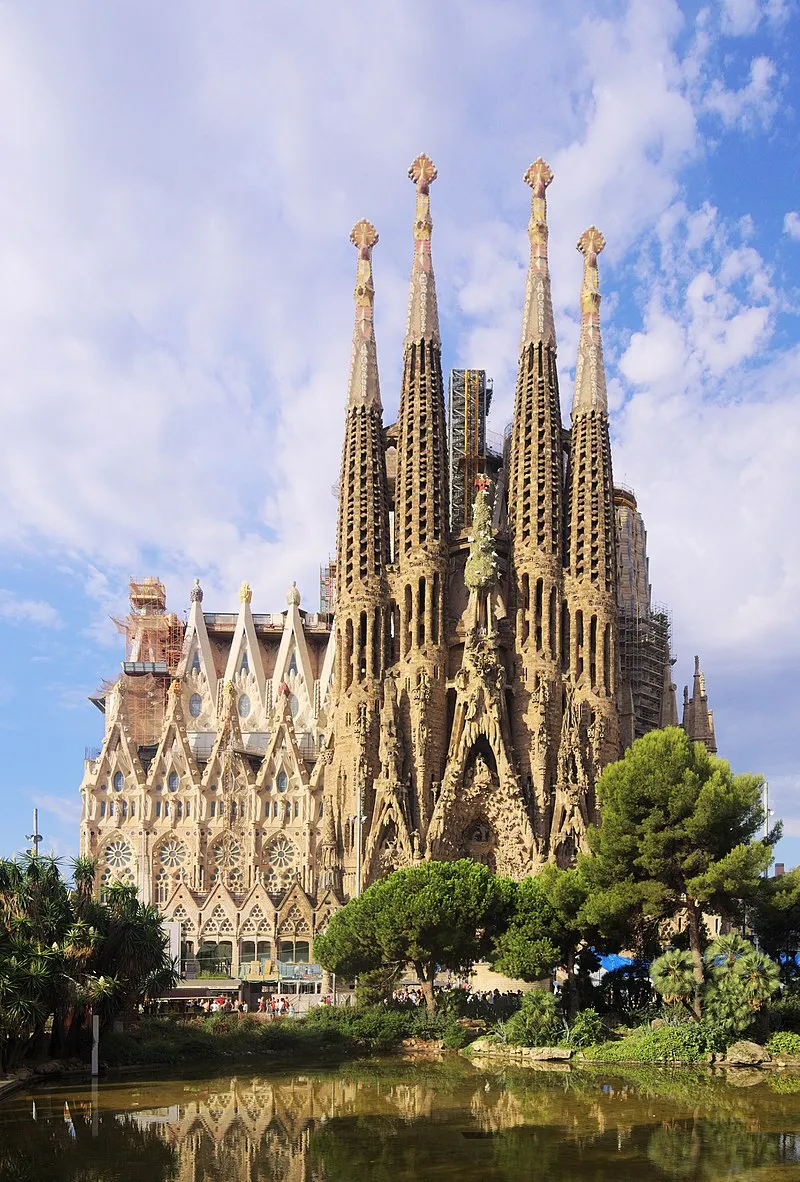137 Years After Construction Began, La Sagrada Familia Receives Building Permit
The church’s trustees hope to complete construction by 2026, the centenary of architect Antoni Gaudi’s death
/https://tf-cmsv2-smithsonianmag-media.s3.amazonaws.com/filer/6d/02/6d02c088-225e-4304-93cd-190e11ccc888/1280px-sagrada_familia_nave_roof_detail.jpg)
At this point, Barcelona’s La Sagrada Familia is almost as famous for its history of construction woes as it is for being designed by Catalan modernist Antoni Gaudí.
Today, 137 years after its first stone was laid, the Roman Catholic basilica remains unfinished. But local authorities recently announced that the project, which has been under construction since 1882, has finally passed a major milestone: securing the building permit needed to ensure its construction’s legality.
At a press conference last Friday, Janet Sanz, Barcelona’s deputy mayor for ecology, urbanism and mobility, explained that the local council had resolved “a historical anomaly in the city—that an emblematic monument like the Sagrada Familia … didn’t have a building permit.”
According to the church’s official architecture blog, individuals associated with construction first applied for a permit in 1885, three years after work began. This application, submitted to the City Council of Sant Martí de Provençals (a local neighborhood), included a blueprint signed by Gaudí, but as Barcelona officials told press, was never recorded as being granted or rejected. The oversight was only discovered in 2016, Agence France-Presse reports, creating a conundrum for the foundation tasked with completing and preserving the long-unfinished basilica.
Speaking with NPR’s Gabriela Saldivia, Sanz adds, “They were working on the church in a very irregular way. And we were very clear that, like everyone else, La Sagrada Familia should comply with the law.”
The seven-year license, planned to cover construction through completion in 2026, requires the foundation to pay Barcelona 4.6 million euros, or $5.2 million USD. As Taylor Dafoe reports for artnet News, this hefty fee—the highest licensing cost in the city’s history—arrives less than a year after officials imposed a $41 million fine on the church’s trustees for building without a permit.

Under the new agreement, the La Sagrada Familia foundation pledges not to increase attendance, which is already placing pressure on the popular city; according to Dafoe, some 4.5 million annual visitors pay between $19 to $43 to enter the basilica, while an additional 20 million take in the visual spectacle from its surrounding grounds. To cut down on congestion, trustees will create a direct access route from the local metro stop to the church.
Ideally, Gaudí’s masterpiece will be completed by 2026, the centenary of the esteemed architect’s death. Gaudí’s ambitious design originally featured 18 towers, including 12 for each of the biblical disciples, but as the Associated Press notes, it’s possible that some of these spires will never be erected. Currently, just eight are complete. If the church actually rises to 566 feet, the maximum height Gaudí envisioned, it will become the tallest religious structure on the European continent.
A number of obstacles have prolonged the basilica’s construction. As Benjamin Sutton writes for Artsy, the architect himself only lived to see one bell tower completed; struck by a train on June 7, 1926, he died three days later at the age of 73, leaving his assistant, Domènec Sugrañes, to oversee the building of three additional towers.
But 10 years after Gaudí’s death, disaster struck: Civil war broke out in Spain, and anarchists targeted both the architect’s former studio and his greatest creation, destroying plaster models and drawings and inflicting significant damage to the church. Work slowly resumed over the following decades, and in 2005, Unesco designated the mostly completed building a World Heritage Site. If the basilica is actually finished by 2026, according to the Culture Trip, its almost 150-year construction period will surpass that of the Egyptian pyramids and come in just 50 years shorter than the time it took to build the Great Wall of China.
/https://tf-cmsv2-smithsonianmag-media.s3.amazonaws.com/accounts/headshot/mellon.png)
/https://tf-cmsv2-smithsonianmag-media.s3.amazonaws.com/accounts/headshot/mellon.png)